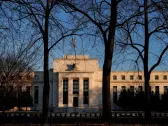Introduction
NEW YORK (Reuters) – A recent surge in U.S. Treasury yields may gain even more momentum after a strong jobs report revealed expectations that interest rates will remain elevated for longer and raised the spectre of benchmark 10-year yields hitting 5%. Some market participants are expressing concerns that this level could rattle broader markets.
The Jobs Report
Friday’s jobs report showed that employers added 256,000 jobs in December, far exceeding economists’ forecasts. This positive data bolstered expectations that the Federal Reserve will maintain elevated interest rates to curb economic overheating. However, this news dashed investors’ hopes for a respite from the surge in Treasury yields that has been impacting stocks since the beginning of the year.
The report also reignited concerns about inflation, which remains stubbornly above the Federal Reserve’s 2% target. In an interview, Felipe Villarroel, partner and portfolio manager at TwentyFour Asset Management, expressed doubt that inflation is decelerating: "The report was obviously negative for inflation." This sentiment has led traders to expect that the central bank will wait until at least June before reducing its policy rate.
Inflation Concerns
Before the jobs data was released, traders had priced in a 50% chance of the Fed cutting rates as early as May. However, both J.P. Morgan and Goldman Sachs have since pushed their Fed rate cut forecast to June, from an earlier projection of a March cut. The concern over inflation has also raised the possibility that the Fed’s next move could be a hike—a scenario that would have been unthinkable just a few months ago.
Federal Reserve Policy
Analysts at BofA Securities noted that while the strong jobs report is positive for the labor market, it has not fundamentally altered Fed policy expectations. The bank is widely expected to remain patient on its balance sheet reduction and likely to stick with its 2% inflation target. However, the ongoing concern about inflation has led some to speculate about a possible rate hike in late 2023.
Longer-Dated Yields
The surge in Treasury yields is also being driven by longer-dated yields, which have risen sharply amid government bond selloffs, particularly in the U.K. This dynamic reflects investor sentiment that inflation will remain elevated for some time to come and that Fed policy will be focused on maintaining price stability.
Market Dynamics
As markets continue to digest these developments, participants are closely monitoring central bank statements and economic reports. The Federal Reserve’s commitment to keeping rates low while inflation remains elevated has created a delicate environment for bond yields, with the 10-year Treasury note yielding around 3.5% as of recent trading sessions.
Implications for Investors
For investors, this week’s job report provides some short-term clarity but leaves a lot of questions about the Fed’s policy stance going forward. The rise in Treasury yields has had a mixed impact on equities, with some sectors seeing gains while others struggle to maintain momentum.
Economic Reports Ahead
Looking ahead, economic reports will continue to play a critical role in shaping market dynamics. Traders will be closely monitoring manufacturing and services sector data as well as personal income and expenditure figures. Any unexpected shifts in these readings could have significant implications for risk assets and the broader market sentiment.
In conclusion, while the strong jobs report has provided some positive news for the economy, it has also reinforced concerns about inflation and the Fed’s policy direction. As markets continue to evolve, participants will need to stay closely attuned to developments in both the labor market and financial markets.



